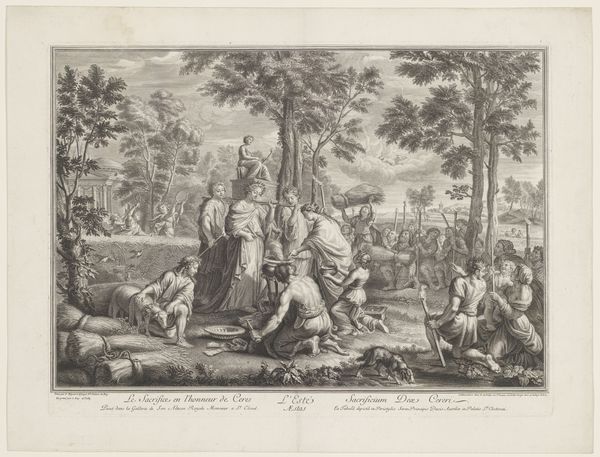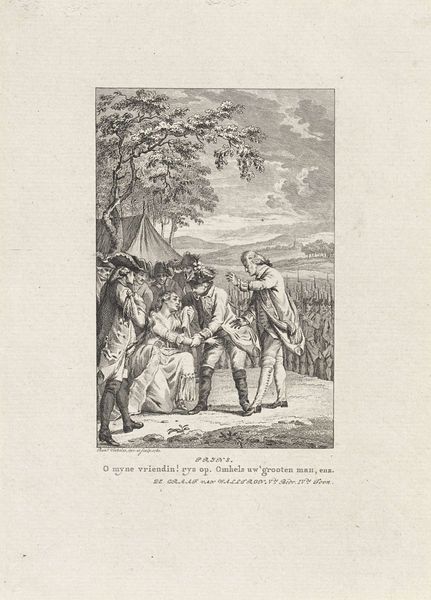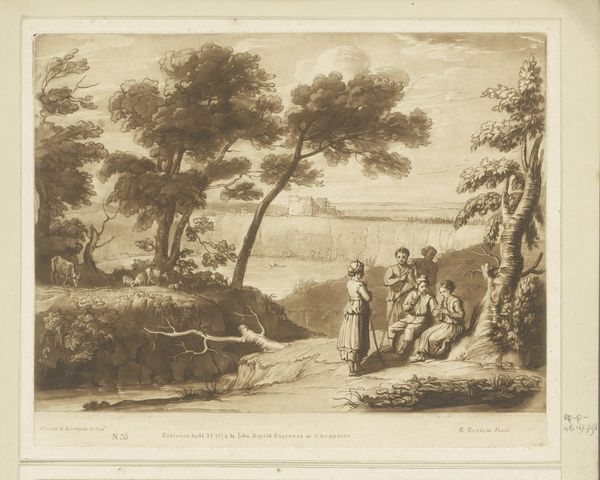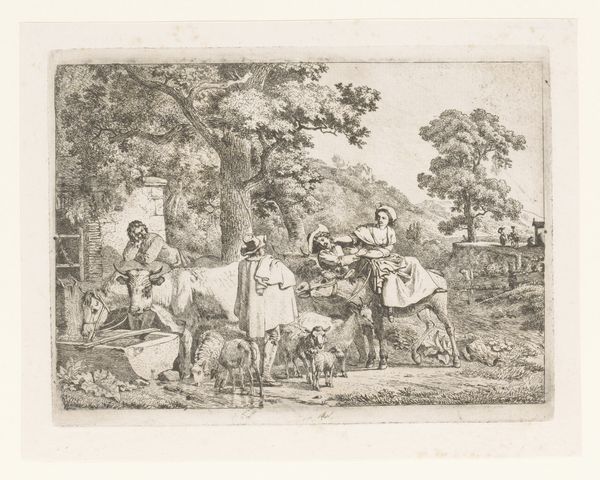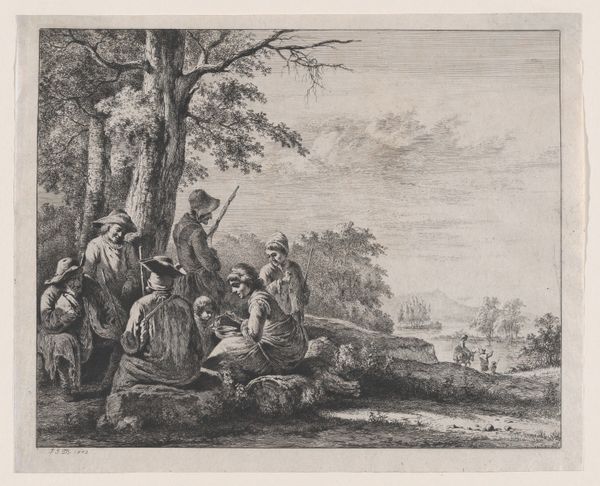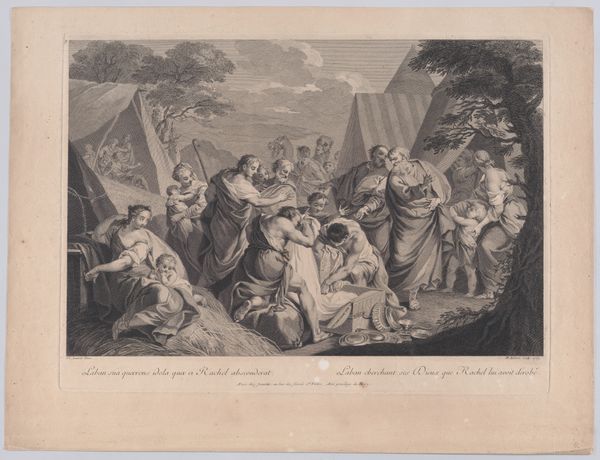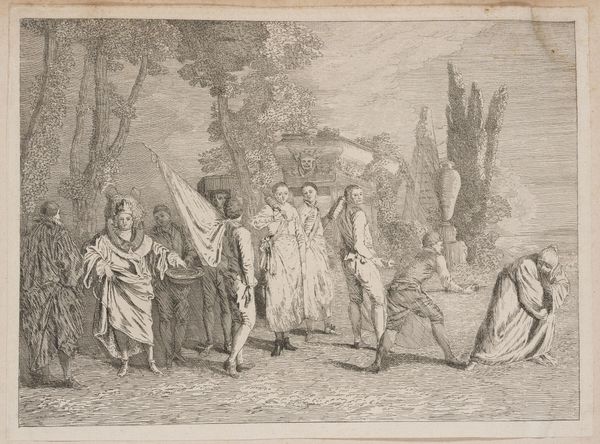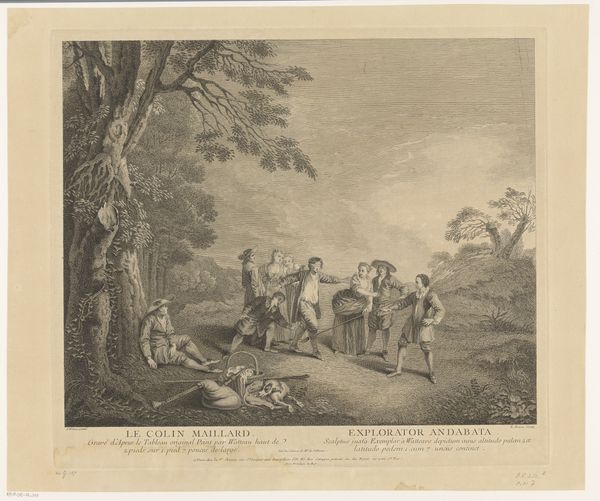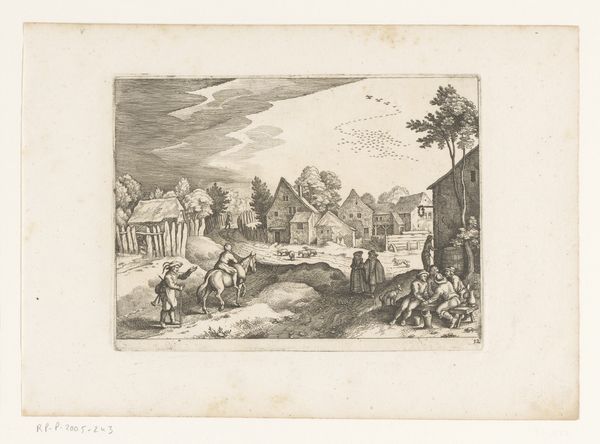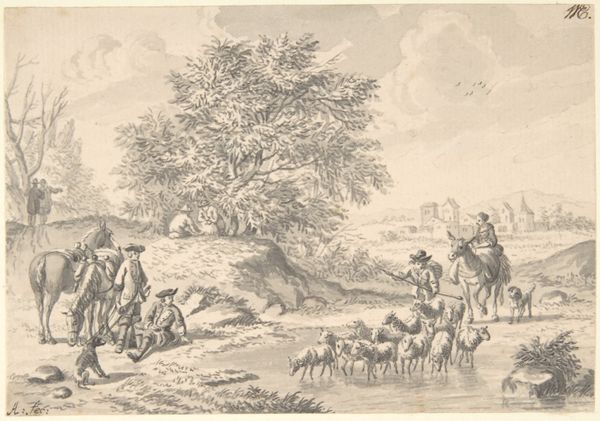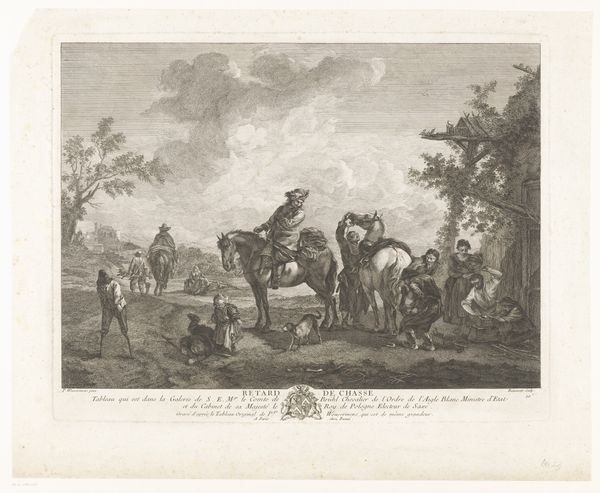
drawing, print, engraving
#
drawing
# print
#
romanticism
#
genre-painting
#
history-painting
#
engraving
Dimensions: Sheet: 11 5/8 × 16 11/16 in. (29.6 × 42.4 cm) Image: 9 in. × 12 3/4 in. (22.8 × 32.4 cm)
Copyright: Public Domain
Editor: This is Hippolyte Bellangé’s “The Lunch Lady,” made sometime between 1835 and 1845. It's a print, so likely an engraving or drawing, depicting a scene of soldiers interacting with civilians. There's a relaxed atmosphere to the scene, and the composition feels very stage-like. What do you see in this piece? Curator: The casualness is deceiving. While seemingly a genre scene, consider the social dynamics at play. We see a group of presumably French soldiers engaging with a woman, perhaps a *cantinière*, and Black individuals. How does this imagery, created within a Romanticism context, reflect and potentially reinforce colonial power structures and racial hierarchies? Editor: So you're saying this seemingly ordinary scene might actually be making a statement about race and class in French society? Curator: Precisely. Think about the term *cantinière*. It invokes an identity marked by both gender and class. Are these soldiers acting entitled to this woman’s services, her space? Where do race dynamics fit in this image? Are the people depicted as background or fundamental figures in the narrative? How does the landscape itself operate within this power dynamic, legitimizing European expansion? Editor: I hadn’t considered the backdrop in such a pointed way before. Curator: Art is never created in a vacuum. How does Bellangé use the romantic style to either critique or uphold these social dynamics? Is he complicit or critical? Perhaps even a bit of both? And for whom was it produced? Editor: It's amazing how a seemingly simple genre scene can open up these much bigger conversations. I am walking away questioning every element in the artwork. Curator: Precisely! That critical lens, recognizing historical context and inherent power structures, enhances our appreciation of art’s enduring relevance.
Comments
No comments
Be the first to comment and join the conversation on the ultimate creative platform.
